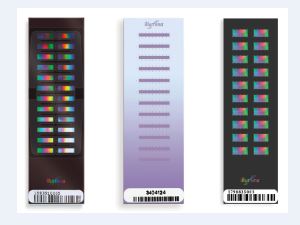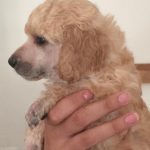
On testing for every genetic mutation under the sun…
Why not offer a huge panel of disease gene identifications?
There are a number of companies who do this, and do a good job of it. This is a wonderful thing for adopted mixed dogs, since there’s no way to know what’s in them, but our BetterBred.com service is for breeders. While we understand the attraction of knowing every possible mutation in a dog, the truth is, our philosophy simply differs, because we aren’t assessing pets – we are assessing dogs that will be the parents for the next generation.
Breeders have become accustomed to the great search for The Gene. We think, once we’ve admitted there’s a problem in a breed, that if we can just find The Gene, then we can breed it out, and save the breed. In some cases this is true and has been an enormous benefit for a breed. Whole lines have been saved, diversity has been salvaged and by breeding out affecteds and carefully breeding to clear dogs, a recessive mutation can slowly disappear from a population. How is that not a great thing?
As is often the case for dog breeders, dedicated, enthusiastic, passionate dog breeders, we often think that if some is good, more is better. We want the best. We want the purest. We want to see in our whelping box the results of all our hard work – perfect puppies.
Playing with genes, which is what breeders do, is an enormous responsibility. That’s why we take it so seriously. It’s also incredibly complex. Dogs have over 19,000 genes, and over 2.8 billion base pairs in their DNA. (Base pairs are the little rungs on the spiral ladder that makes up the DNA.) One small change in one gene, in a base pair or two, can mean different traits in an animal. The differences can be huge or tiny, evident or not, show up immediately or show up later.
In every animal, there are tiny little blips in the code – a rung or several on the spiral ladder that is a little different from the last generation’s spiral ladder. In 2.8 billion of these base pairs, how obvious is it that a tiny fraction of them will reproduce a little wonky when making new sperm and eggs? The miracle is, in fact, that so many reproduce perfectly. It’s important to know that flaws happen though, all the time, in all animals, in every generation. These mutations are usually either problematic or harmless, and very occasionally they are a benefit to the animal. The first white snowshoe rabbit was very glad for its new mutation, I’m sure! A similar mutation is not such a happy event in the white tailed deer.
So mutations happen, and only rarely are they of such benefit that they help creatures survive, but we humans do love to spot the pretty mutations and promote them. Think of merle dogs – so pretty, but most likely popular because humans find it pretty, since dogs with two copies of the merle gene do not thrive.
Just as we keep the mutations we like around, there are invisible ones happening as well, and they tend to become common in specific breeds without us knowing. Sometimes this is just because they happened to be in an otherwise fantastic sire that everyone used. Sometimes they are in a popular line. Sometimes we have a breed founded on very few dogs, and those founders had their mutations. This is why we see certain recessive disease mutations in certain breeds – but we only see them once they start meeting mutations of precisely the same type, and this happens most when animals have an ancestor in common.
This is why we breeders are always on the lookout for recessive genes, and researchers are more than happy to look for these recessive mutations. In these breeds, affected dogs ALWAYS have two copies of the recessive mutation, and healthy dogs that produce the disease ALWAYS have a single copy of the mutation. These are what Dr. Niels Pedersen calls the “low hanging fruit” of the genetic diseases. Researchers make the tests and we breeders buy them, often for hundreds of dollars each time, for identification of one mutated gene at one locus.
So as genetic research has rapidly improved and become more affordable, a few smart people decided to test for all the known mutations at the same time. This, of course, makes perfect sense from a researcher’s standpoint, and in terms of cost effectiveness, why would anyone keep charging breeders for single locus disease tests when you can test for them all in one shot? With a single test a dog can be tested for dozens or hundreds of mutations at a single time. Bonus!! Right? Well…. sort of.
First, as we’ve already seen, mutations tend to be breed specific. This is because genes interact. A deadly gene in one breed may not be so deadly or could even be perfectly harmless in another breed. A mutation may be found in one breed and nonexistent in another. And some markers that are tested for aren’t even the cause of the disease at all, they just happen to be found in affected dogs because they are near the causal mutation, so of course in another breed these markers are likely to be meaningless.
So it’s important to know a great deal about each of the mutations and each of the markers and their relation to a breeder’s breed.
But breeders don’t think like scientists – we think like breeders. For a century, our community goal was to produce ever more perfect dogs that were ever more similar to the breed standard. Improvement was the order of the day. Inbreeding became popular because it was the fastest way to improve the next generation – and only later did we realize that it was also the fastest way to spread an invisible mutation or concentrate the genetic elements for complex diseases.
Here are some facts we breeders have to learn by heart. Every living creature carries with it mutations. Let’s repeat that for emphasis: EVERY LIVING CREATURE CARRIES MUTATIONS.
Breeders, always trying to improve their breed, want to breed out mutations. One mutation is easy to breed out.
How about two? Tricky but doable.
Three? Ugh.
Four? Come on.
Five? “I won’t have that dog in my breeding program.” Right?
And yet your dogs, your beautiful, healthy, robust dogs in fact do have mutations. They are just unseen by you, probably are ones that are exceedingly rare and they will probably never cause a problem.
So what happens when you run a panel and there are several mutations, all from other breed research, in your otherwise healthy dog? The idea of finding unknown mutations seems great – but when a few show up in your dog, what will you do?
Many breeders will simply not breed from a dog with several known mutations – even a healthy one. Those mutations may mean nothing about the health of your dog, but can you justify breeding such a dog? How do you explain it to other breeders? You don’t. You most likely just eliminate an otherwise fine specimen of the breed, most likely unnecessarily.
Let’s imagine another dog – one that passes everything and its large panel test shows no mutations or faults found of any kind. Wow! What a relief. Proudly, you can boast, this dog is perfect. DNA clear of everything. You can breed this handsome boy to anyone and anything and you are only improving the breed by doing so, right? And other breeders may flock to use your boy. Yay!
Right? Well…sort of.
Let’s review. EVERY LIVING CREATURE CARRIES MUTATIONS. This one too. You just can’t see this dog’s mutations. They haven’t been found yet, but after he sires hundreds of puppies, eventually you may well find out as generations pass and the lines eventually double up. This will happen more rapidly in breeds with fewer breeding dogs.
So if all dogs CARRY MUTATIONS (and they do), if we don’t test for them,how do we know what’s there and how do we get rid of them?
You do what nature does – you breed dogs that aren’t very similar genetically. And nature doesn’t identify the mutations first – it just avoids them being found in both dam and sire.
Most mutations are recessive. They are a one time, random error in the DNA, and only happen in a single sperm or egg. That sperm or egg will meet up with the egg or sperm of another dog that is almost certain not to have the same mutation in the same place. Together, the gene pair – the healthy one from the mate and the new mutation from the first dog will function fine because the healthy gene will do its job. In a recessive disease, you need the new mutation to meet up with one precisely like it to cause the disease. When you breed to very different dogs, you raise the probability that whatever mutations in there are in the two dogs (because ALL DOGS CARRY MUTATIONS) will never, ever meet their match.
Inbreeding as a method has been used a long, long time. When you see a pedigree that has the same dog appear many times, you can bet that there was some culling along the way, because inbreeding means recessive mutations are more likely to meet. There isn’t an experienced dog breeder who won’t tell you that severe inbreeding requires a strong constitution. While it is also true that severe inbreeding can “purify a line” from recessive diseases, there are other biological deficits from repeated generational inbreeding that cause other problems. It’s just a trade.
Nature has been at this much longer (about 4 billion years) and the most successful strategies are the ones that improve survivability. All breeding pairs instinctively try to detect genetic differences when looking for a mate. Again, animals can, of course, look just the same and still be very different genetically. (Think of a red fox. Now think of another red fox. See what I mean? )
When you breed for diversity, what you are really doing is breeding so that NO mutations ever meet their precise matches. You can still select for traits you like, but there’s no good way to get rid of multiple mutations just because you know they are there. Test all you like – whatever your results are, you already know that your dog has mutations. Whether you are breeding to get rid of known recessive mutations or trying to avoid doubling up on unknown ones, the most effective way to do that is to breed unrelated animals with similar positive qualities.
So that’s why BetterBred.com won’t offer large panel single locus disease gene tests. There are great other companies that will. Instead, we offer the ability to know whether dogs are genetically unrelated, distantly related, or very related, based on genetics, and we think that’s a better way to breed healthy dogs and preserve gene pools.
 Previous Post
Previous Post


